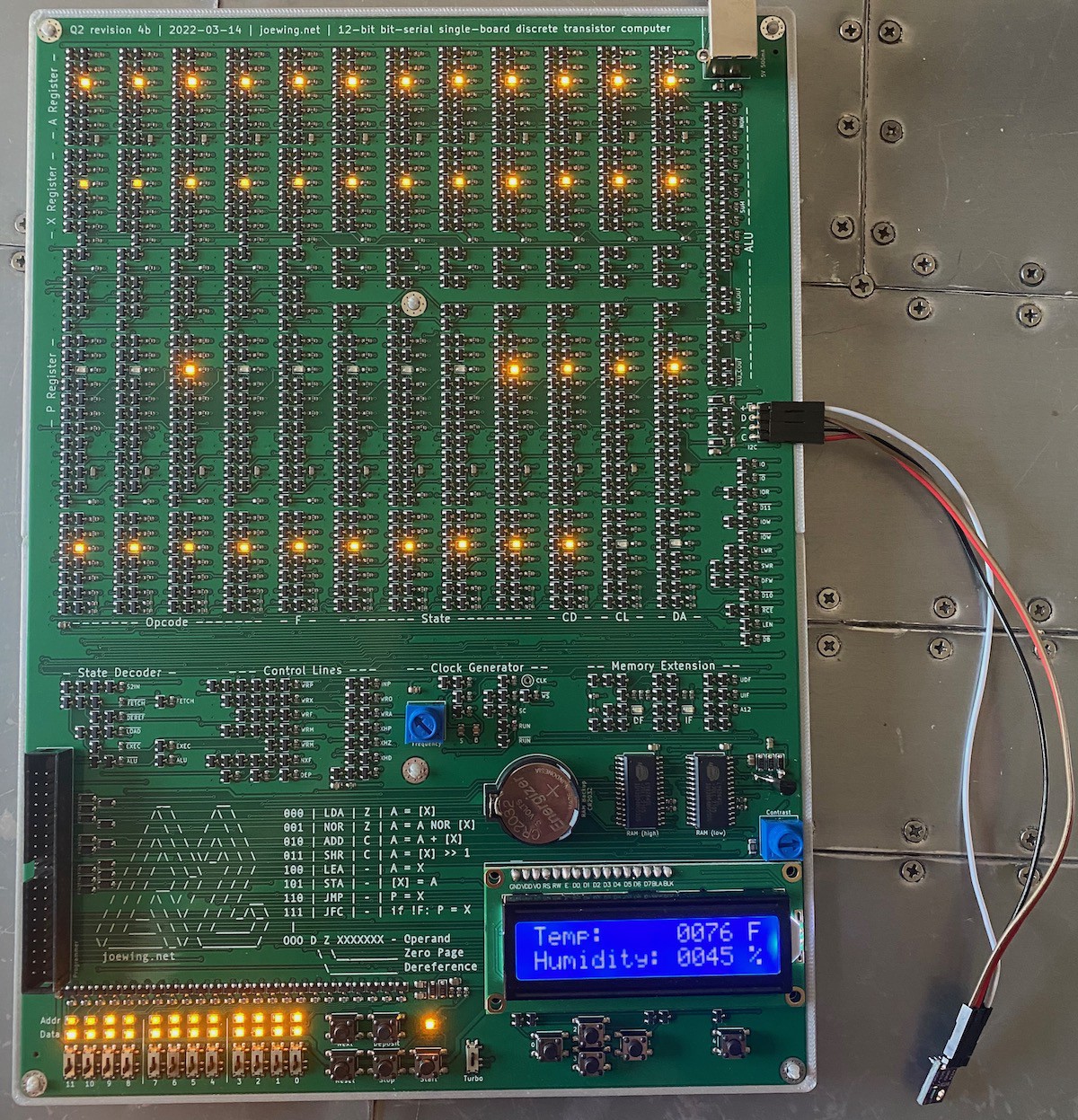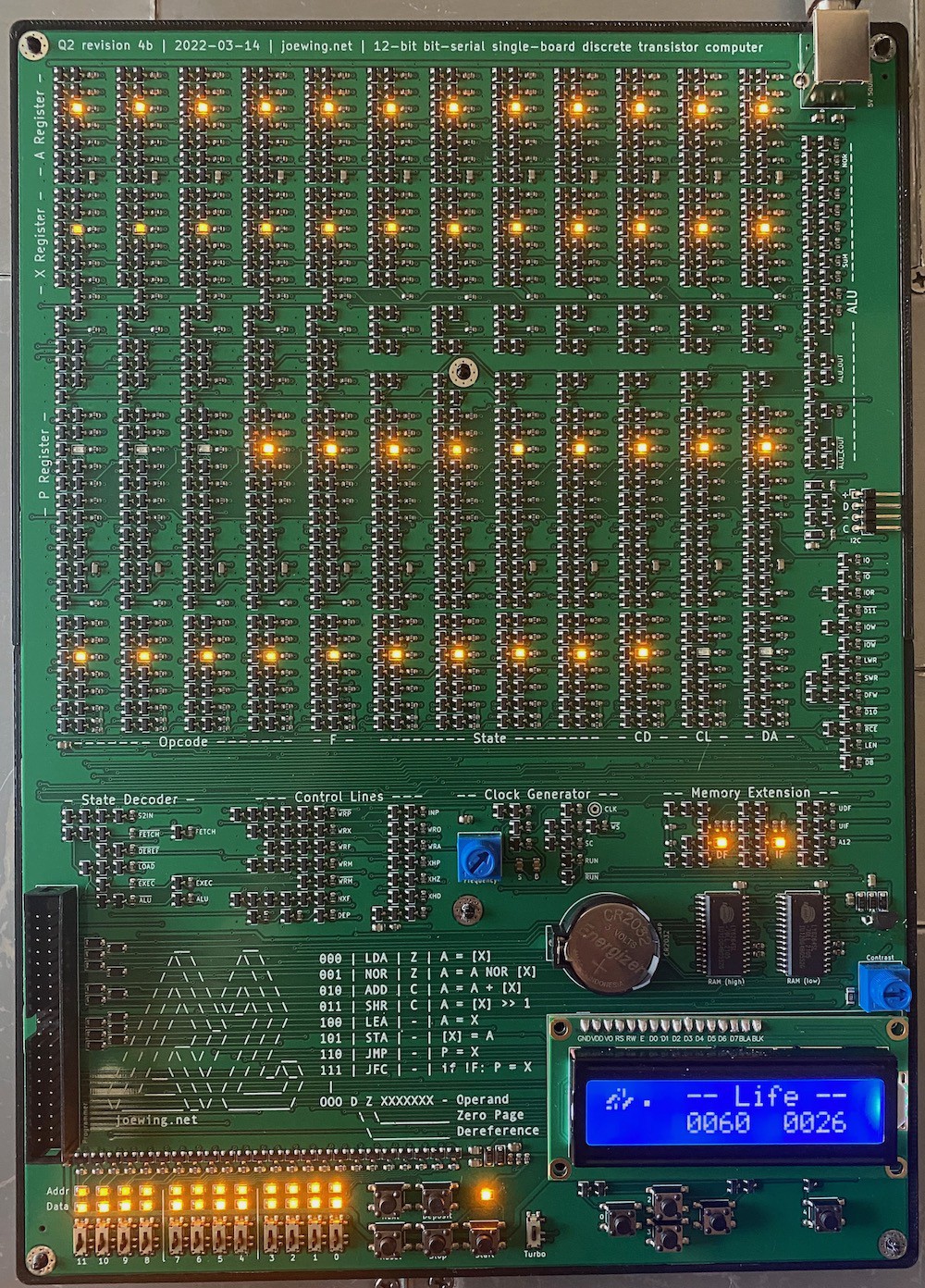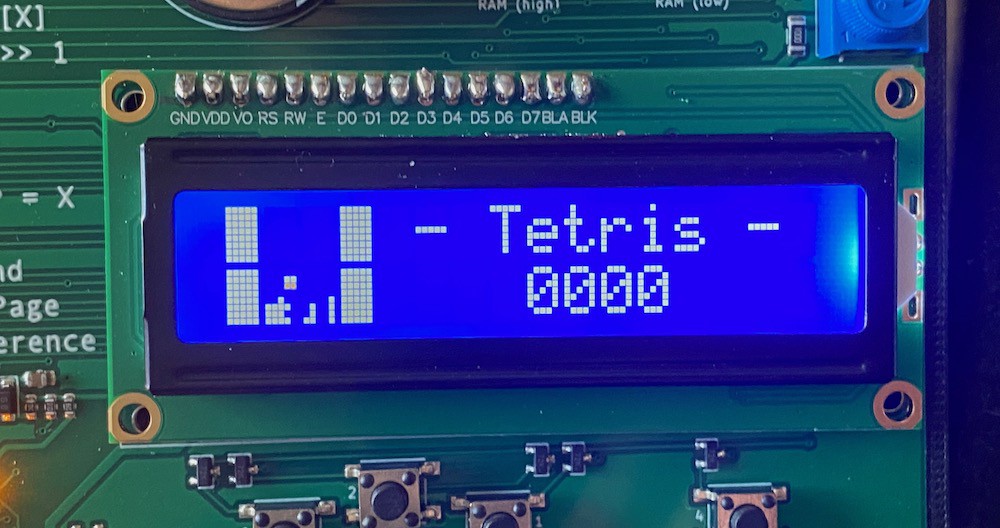I recently ordered a new revision of the Q2:

Some of the bigger changes since the last version:
- Smaller footprint.
- I2C interface.
- Memory extension.
- New clock generator.
- Green with yellow LEDs.
The I2C interface allows the Q2 to communicate with sensors. Here it is showing the temperature and humidity from a SHT31 sensor:

The memory extension allows the Q2 to use double the memory. Here it is simulating Conway's Game of Life in the second field:

This version is able to run somewhere around 150 kHz before becoming unstable. Note that there is a "turbo" switch which disconnects a capacitor from the oscillator. When the turbo switch is off, the clock runs between ~50 Hz and ~200 Hz. When the turbo switch is "on", it runs between ~50 kHz and ~200 kHz.
The current version has a problem with power-on-reset (power off to be specific), where it corrupts memory when power is disconnected. This is easily fixed by soldering a MCP100 supervisor to the enable pin of the RAM, a change that I plan to incorporate directly into the next revision. Since the RAM itself is implemented with integrated circuits, I don't feel like this is cheating too much and it's a very robust solution.
I've also written a few new games for the Q2 including Tetris and Space Invaders. These can be run in the online simulator and the Q2L code available in GitHub. Tetris on a 1602 LCD is a little hard to see, but not impossible:

 Joe Wingbermuehle
Joe Wingbermuehle
Discussions
Become a Hackaday.io Member
Create an account to leave a comment. Already have an account? Log In.